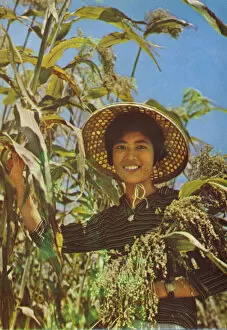Sorghum Collection
Sorghum, a versatile crop with deep roots in both the USA and Burundi, holds immense significance in agricultural practices
All Professionally Made to Order for Quick Shipping
Sorghum, a versatile crop with deep roots in both the USA and Burundi, holds immense significance in agricultural practices. In Garden City, Kansas, farmers cultivate vast fields stalks or grain sorghum seeds primarily used for various purposes. This drought-tolerant grass, also known as great millet or milo (Sorghum bicolor), plays a vital role in sustaining local communities. In rural Burundi, a young girl stands amidst a flourishing sorghum field. The sight is awe-inspiring as she witnesses the beauty and abundance that this crop brings to her village. Sorghum grass has become an essential part of their lives and livelihoods. With its scientific identification codes like DDE-90039341, DDE-90019457, DDE-90019456, DDE-90019443, and DDE-90019442; sorghum showcases its global presence and importance across different regions. Not only does sorghum contribute to the economy by providing raw materials for industries such as biofuel production but it also serves as a staple food source for many communities worldwide. Its grains are transformed into nutritious flour used in making breads and other culinary delights. Engravings depicting groceries filled with various grasses and grains highlight the diversity within this plant family. Millet (Panicum miliaceum) alongside great millet (Sorghum bicolor) stand out among these illustrations showcasing their prominence on African soil. As we delve deeper into understanding this remarkable crop's impact on society throughout history, we come across engravings portraying the three principal kinds of African millets – emphasizing their crucial role in nourishing generations past and present. From Kansas to Burundi, from industrial applications to sustenance farming - sorghums' versatility knows no bounds. It continues to be cherished globally for its resilience against harsh climates while providing sustenance to millions.
















































